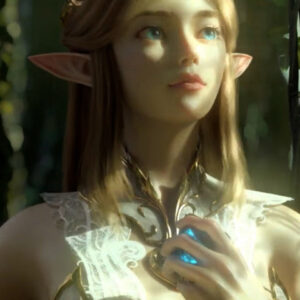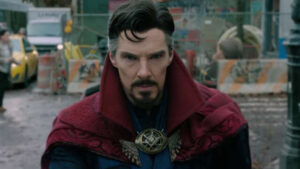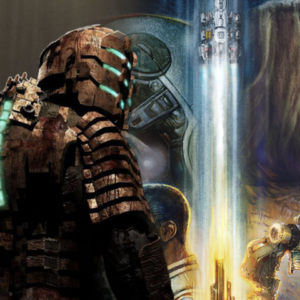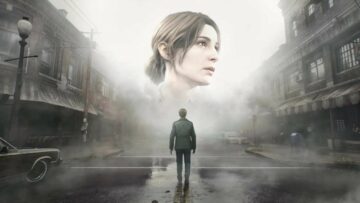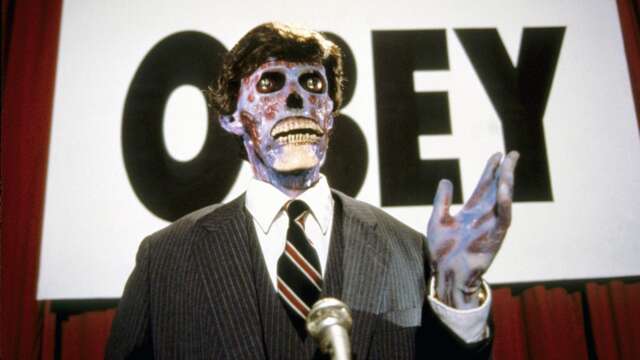
The 1980s was, in short, an incredible time for science fiction. The craftsmen behind practical effects were at the top of their game, and many of these movies feature some of the best visual effects seen on film, all of which are used to help tell stories that still resonate today, covering topics ranging from corporatization and militarization of the police to the effects of climate change, that seemed like good sci-fi fodder than and feel only too relevant today. Others are fun, memorable romps that take the characters through time, facing off against aliens and coming face to face with the dangers of unethical science gone wrong.
20. Starman (1984)
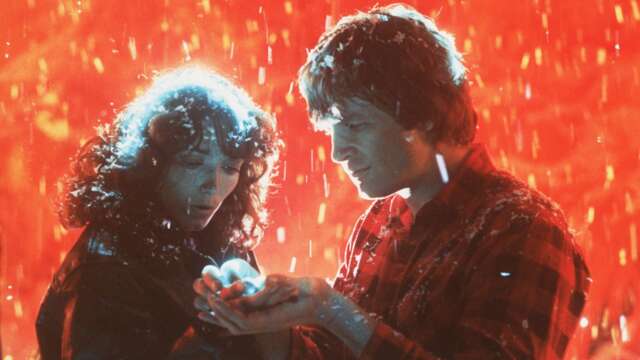
What genre can’t John Carpenter pull a classic out of? Action, slashers, sci-fi horror, and now romance. The 1980s’ many different stories of alien contact feel like they could almost take place on the same earth, like a proto Cinematic Universe. While the Last Star Fighter is happening in California, Starman is taking place much more quietly in Wisconsin. An alien craft is shot down by the military, bringing an alien being made of light into contact with a woman named Jenny. He takes the form of her late husband, and the two set off–Jenny unwillingly at first–on a journey to get him to a rendezvous with his kind. The two have a bunch of close calls, during which they form a bond and fall in love, leaving Jenny pregnant with a son as the alien ascends into the sky. While so many of the stories in this list are about monsters, death, and combat, this is a simple love story made memorable thanks to strong performances from its leads, Jeff Bridges and Karen Allen.
19. Flight of the Navigator (1986)
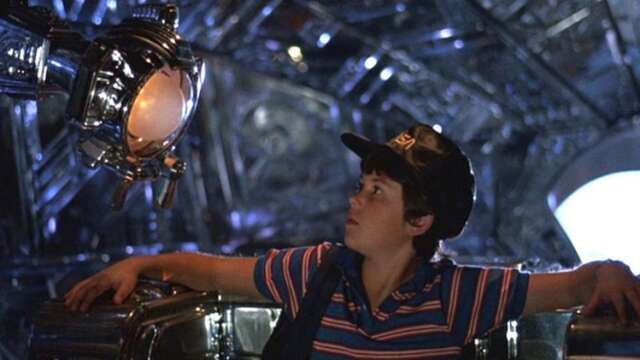
Flight of the Navigator is a fun, sweet movie about a young boy named David who takes a fall in the woods, only to find himself transported eight years into the future, from 1978 to 1986. As he undergoes tests in the hospital, a voice calls out to him. The voice belongs to an alien spacecraft, and the two go on an adventure to get David back home to his family. Flight of the Navigator looks a bit cheesy now, but it stands out as one of the first movies to use extensive CGI effects and one of the first to use an entirely electronic score. The story is a small, intimate one about family and memory, but the movie drops all kinds of hints of a greater universe out there. It’s a quintessential ’80s Disney live-action movie.
18. The Adventures of Buckaroo Banzai Across the 8th Dimension (1984)
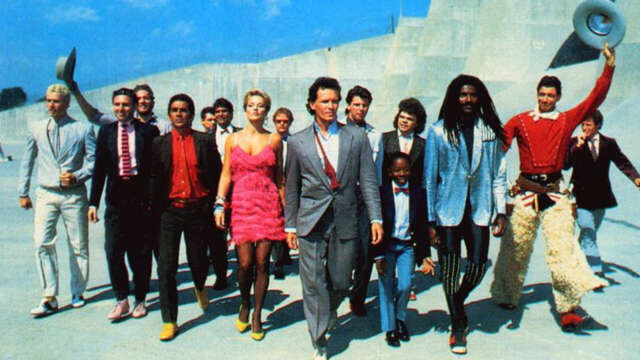
Peter Weller plays the part of adventurer and brain surgeon Buckaroo Banzai. With the help of his rock band/crime-fighting team, he must stop aliens from the 8th Dimension, led by John Bigbooté, from invading Earth. Buckaroo Banzai is cheesy and silly, but it constantly puts fun at the forefront and it shows in every shot. This is a one-shot story about a legendary hero, but years before mainstream movie viewers were getting acquainted with the idea of lore, this movie was already playing with the idea of ongoing movie series and deep character histories, making it a tongue-in-cheek adventure with a goofy sense of humor perfect for any sci-fi fan.
17. Flash Gordon (1980)
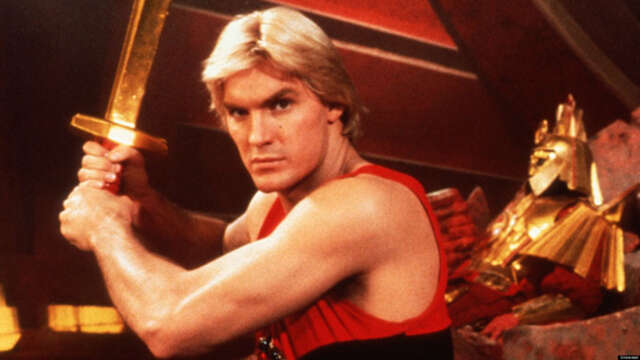
Flash! Ahh! If you’ve heard the theme to Flash Gordon, written and performed by Queen, even once, it’s unmistakable. Flash Gordon is a football player for the New York Jets who, through no fault of his own, ends up light-years from home, standing before the ruler of the universe Ming the Merciless. Imagine if someone tried to introduce you to all of Greek mythology’s biggest characters and places at once, in just two hours. That’s what Flash Gordon feels like–this rich, massive fictional world with dozens of characters that feel like they live before and after the movie’s credits. There are ideas everywhere that feel like they could spin off into their own stories.
At the same time, to say that Flash Gordon looks cheesy by today’s standards is a massive understatement; the seams of the visual effects are visible everywhere, to the point where the movie almost feels more like a stage play. It’s an absolute blast for the right audience, but if anything less than forensically perfect visual effects takes you out of the story, then you’ll have a tough time getting into this one. It’s ambitious, and you can see the limits of that ambition in ways that movies from the end of the decade had found workarounds for.
16. They Live (1988)

John Carpenter was firing on all cylinders in the ’80s, earning him three spots on this list. They Live was critically panned at release, but developed a cult following. 34 years later, the film feels hauntingly relevant. A drifter named Nada–played by wrestler Roddy Piper–finds a pair of sunglasses that turn the world monochrome but expose subliminal messages to conform and obey all over the city, as well as exposing the true faces of many aliens living among humanity. Themes of mind control, misinformation, and the power of ill-intended media all feel as powerful today as they did in 1988. And let’s not forget the iconic six-minute-long single-shot fight scene that has been referenced and parodied all over pop culture.
15. Last Starfighter (1984)
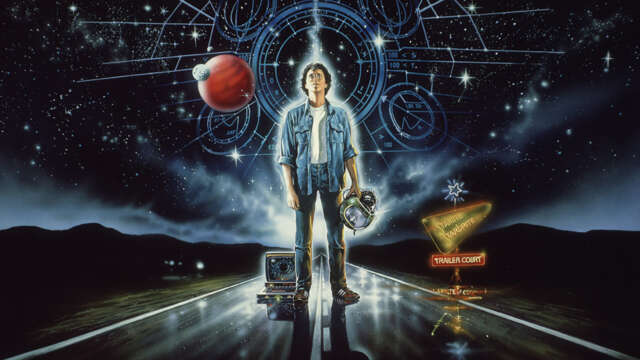
The Last Starfighter is the ultimate fantasy for nerdy young gamers in the 1980s. Protagonist Alex attains the top score in an arcade game, and that game turns out to have been a recruiting program created by an alien race to find life forms with the potential to save their civilization from war. Typical of the Hero’s Journey, Alex resists the call to heroism, and then finds himself unable to resist it, eventually taking on the Ko-Dan Armada. The fantasy comes full circle when he comes back to his trailer park home in a space fighter, with his alien friend bragging about his heroic exploits. The plot is pretty basic, but few films have been parodied as much as The Last Starfighter. The idea of our gaming skills coming in handy is still a strong fantasy all these years later. All that time in Fortnite will prepare us for when the great storm comes, right?
14. Time Bandits (1981)
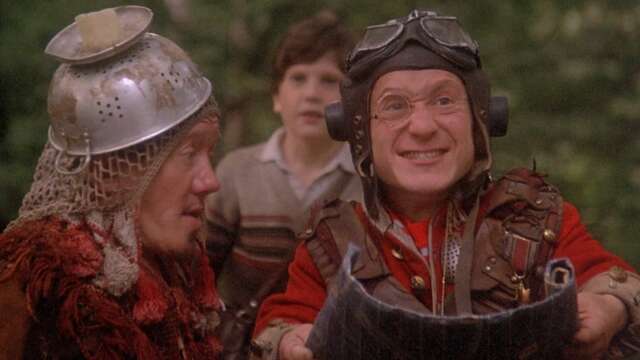
Time Bandits, directed by Terry Gilliam of Monty Python fame, is one of those ’80s kids movies that is both clearly for kids and also designed to terrify those same kids. After protagonist Kevin watches his parents argue tiresomely about which kitchen gadgets will help them outdo their neighbors, he goes up to bed, where a knight on horseback bursts through his door and runs off into the forest that has replaced his bedroom wall. It’s proof positive that there are, indeed, monsters in your closets and under your beds.
That kicks off an adventure that sends Kevin off and running with a group of six dwarves that pushed his bedroom wall down a hallway as they ran from a giant, floating head called the Supreme Being. Kevin jumps through history where they steal from Napoleon and meet King Agamemnon before heading for the Fortress of Ultimate Darkness. Time Bandits is an incredibly imaginative film filled with equal parts compelling ideas and utter silliness. The costuming for the bandits themselves, the design of the fortress, these things all feel perfect. When John Cleese shows up as a doofy version of Robin Hood, things get as silly as you’d expect. This movie was part one of Gilliam’s “Imagination Trilogy,” a set of unrelated fantasy and science fiction films with lavish set and costume design and dark themes, and the others–Brazil and The Adventures of Baron Munchausen–are worth checking out in concert with Time Bandits.
13. Star Trek: Wrath of Khan (1982)
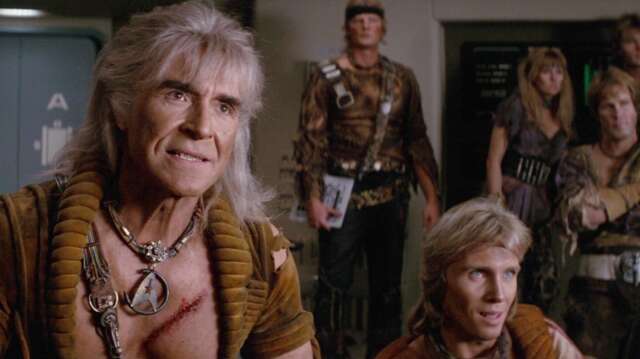
Star Trek movies have had a bumpy ride ever since the first film, with the series having a reputation for the even-numbered movies being worth watching and the odd-numbered ones skipped. Star Trek II: The Wrath of Khan seems to be almost universally agreed upon by fans, though, as one of the best–if not the very best–Star Trek films. As with so many great films, though, it almost didn’t come together. Leonard Nimoy had to be enticed to join the cast with the promise of a dramatic death scene. Ricardo Montalban reportedly considers the film a career highlight, but working out his schedule with his television show, Fantasy Island, still hadn’t happened even as the film was being greenlit. Themes of old age and friendship resonated with viewers, making the film a success both at the box office and on the still-young VHS format, as well as reviving interest in the then-flagging franchise.
12. The Fly (1986)
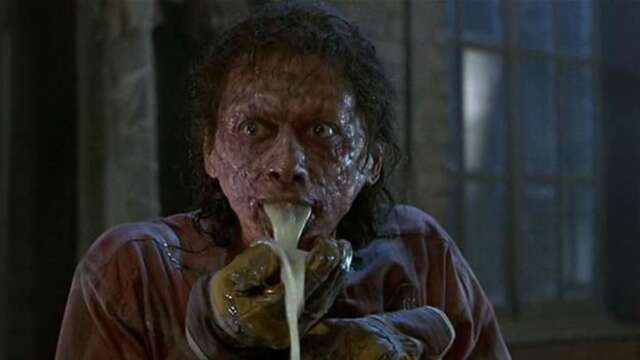
David Cronenberg is renowned for his ability to make our skin crawl, and The Fly is the perfect example of his work. Like The Thing, The Fly is technically a remake of a 1950s sci-fi movie; a scientist accidentally combines his own body with that of a fly during an experiment. But the movie isn’t satisfied with just swapping a couple of body parts. Instead, Seth Brundle (Jeff Goldblum) begins to undergo a transformation that consumes not only his body but his mind. Or maybe it’s just revealing what was already in there. Cronenberg has said that the movie is about illness, aging, and death, but it also seems to be about those of us who have monsters living inside them, and what it takes to draw that out. Go for the tragic love story, but stay for the perfectly-crafted visual effects that still turn stomachs today.
11. E.T. (1982)
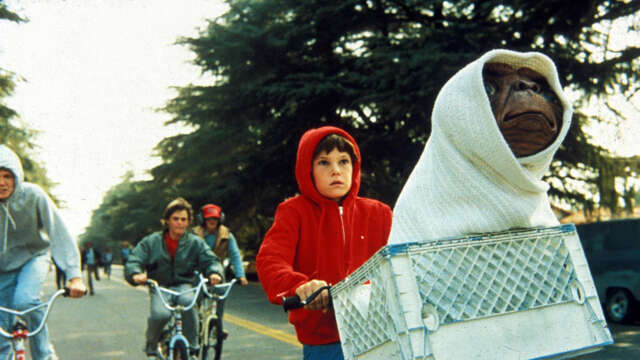
So many of the entries on this list ask the question, “what if there were aliens, and they were bad?” E.T.: The Extra-Terrestrial, meanwhile, asks a different question: “what if there were aliens, and humans were the real monster?” E.T. is an alien botanist who ends up separated from his fellow explorers. E.T. bonds with young Elliott, developing an empathetic connection that leads to heartwarming moments and wacky hijinks in equal amounts. E.T. is a quintessential Stephen Spielberg movie, putting young kids up against danger and wonder, making for one of his best and most beloved films.
10. Predator (1987)
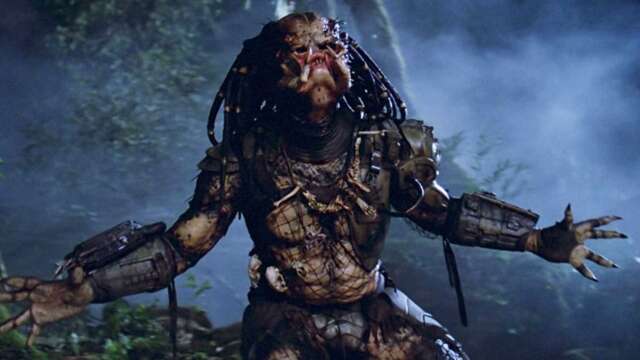
One of the best parts of ’80s genre films is how many of them casually laid out awesome worldbuilding. The Predator character has lived on for decades thanks to a character design that is equal parts cool and horrifying, packs a Batman-level loadout of gadgets, and of course has that awesome heat vision. It all comes together to make a fascinating character that you can drop into other stories and just see what happens. Add onto that some great one-liners and all of Arnold Schwarzenegger’s (there he is again!) charisma and you have an endlessly rewatchable sci-fi action flick. The latest Predator film, Prey, imagines one of the intergalactic hunters facing off against a Native American warrior, hits Hulu on August 5.
9. Akira (1988)
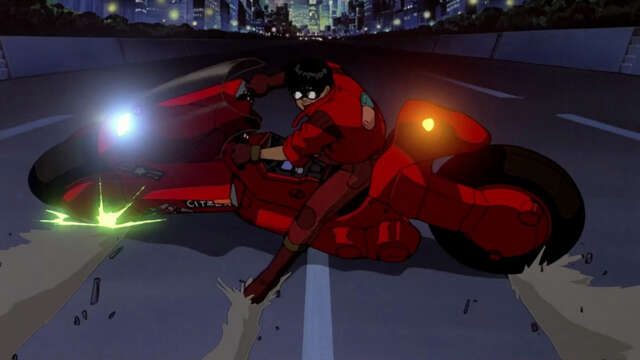
Akira shouldn’t work. The 1988 film is based on a six-volume manga that ran for eight years, two of which took place after the film was released. Comic book movies are daring about how much they try to adapt into a single movie these days, but this would be akin to packing all of the Hobbit and the Lord of the Rings trilogy into a single movie. That sounds terrible, right?
Instead, though, we ended up with a landmark anime film that even three decades later stands out for its visuals and vision. Katsuhiro Otomo’s vision of the near future in Neo Tokyo is apparent even in still images, but it truly comes to life in motion, experimenting with perspective and movement all over the place, with colors that still feel as bright and vibrant as they did then. The story can be hard to follow at times because of how condensed everything is, but the energy and movement of the animation and strength of voice acting carry it along. Akira is every bit as much a part of the Cyberpunk future we’ve dreamt about as Blade Runner, having done just as much to inspire creators that would follow. On top of that, it’s one of the gnarliest body horror films, animated or otherwise, that you can find.
8. Star Wars: The Empire Strikes Back (1980)
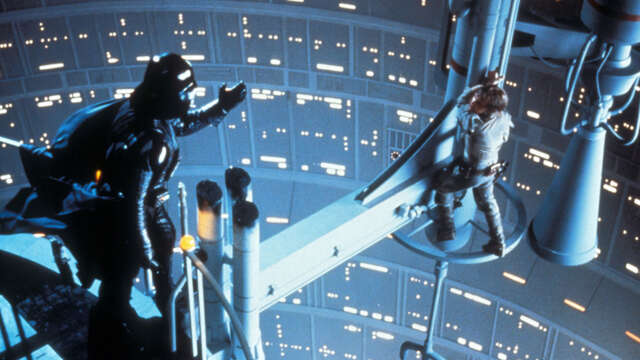
Star Wars: The Empire Strikes Back (and the other films in the series) doesn’t qualify as science fiction in the same way that most of these do. Sure, it has starships, space stations, and laser blasters, but outer space is treated similarly to the sea. The characters leave their ship with nothing more than breathing masks on after they land inside an asteroid. Also, Luke trains with one space wizard and finds out that the other space wizard is his dad. But it does have starships and laser blasters, and it’s one of both the best and most culturally relevant movies of all time. Can’t skip it.
7. The Thing (1982)
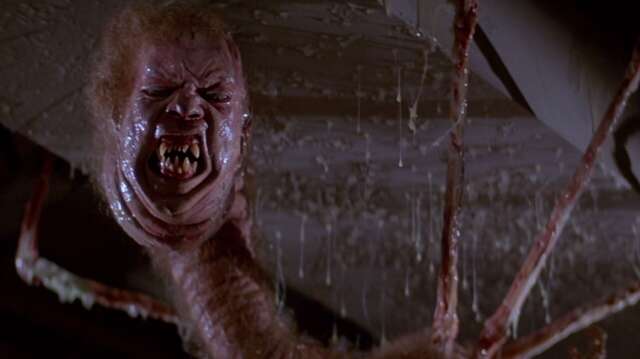
Can a perfect film exist? If so, John Carpenter’s The Thing is in the running to take the prize. Just about everything about this movie has aged well, from the performances of actors like Kurt Russell and Keith David, to the still-haunting visual effects, to the very premise. The Thing is about relationships, masculinity, and paranoia. A team of men tasked with manning an antarctic outpost watch as a helicopter chasing a dog explodes. They bring the dog in only to find out much too late that an alien life form that assimilates and then imitates other life forms is living inside the dog. The men barely know each other, and the little trust they had disintegrates as they realize they have no way of knowing which of them is still human.
The questions the alien itself raises are haunting enough. How old is it? Is it truly killable? As the film ends, we still don’t know if either of the survivors are infected. The distrust and paranoia its presence causes, though, make the core of the story’s drama, and that aspect is timeless. If anything, it feels especially relevant to watch a story about being stuck indoors and worrying about who is infected and who can be trusted after being stuck indoors for two years during a pandemic. Also, the hit indie game Among Us is literally the plot of The Thing turned into a multiplayer game.
6. Aliens (1986)
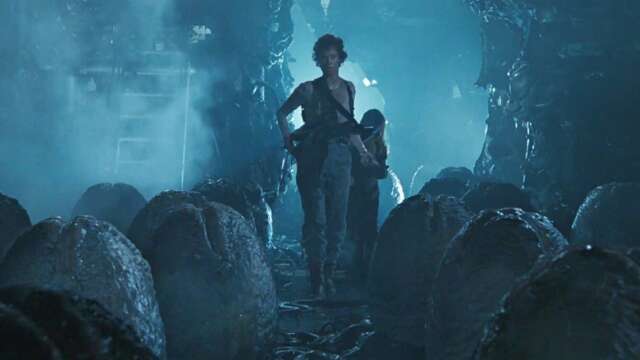
The first Alien film was an out-and-out horror movie that gave us the simple premise of a group of plucky humans facing off against an alien that outmatches them in every imaginable way except, of course, our dogged determination to survive. The James Cameron-directed sequel, Aliens, is an action movie that takes that premise and blows it out into an entire universe of evil corporations, androids, colonies on distant planets, decades-long cryogenic sleep, and–most importantly–space marines. Like the next entry, Aliens’ influence on genre fiction has expanded far past its original premise, with space marines and pulse rifles populating countless video and tabletop games.
5. RoboCop (1987)
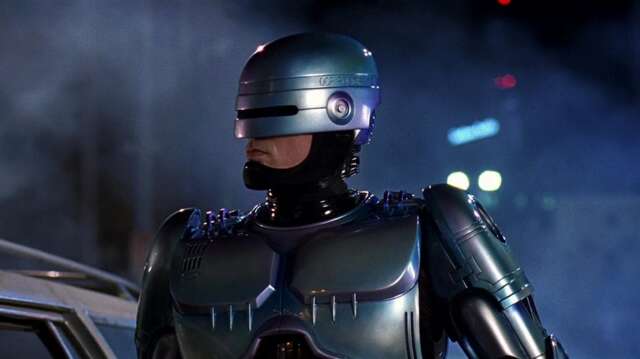
While its sequels would lose the plot, the first RoboCop is an insightful film often underestimated as another cheesy action flick. Director Paul Verhoeven initially rejected the script on the name alone, but when he took control of it he turned it into a satire of American capitalism and all the concerns that came with it at the time. It is, if anything, more relevant than ever: Set in 2028, it imagines an (even more) run-down version of Detroit in a world struggling with climate change and experimenting with bionics. It features themes of overreliance on technology, police overreach, gentrification, bodily autonomy, identity, and more. Also, it’s about a cop, who is a robot. It’s everything you could want.
4. Terminator (1984)
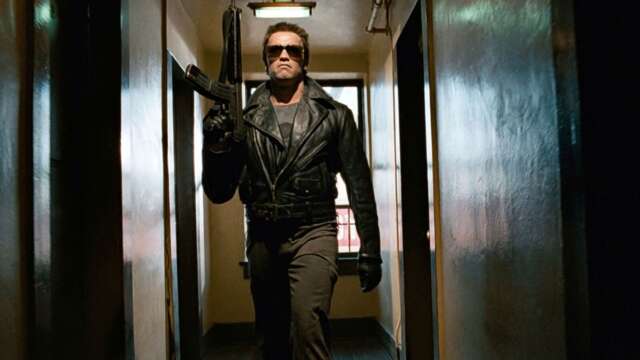
It must have been good to be Arnold Schwarzenegger in the 1980s. It seems like about half the movies that made it big featured him in a starring role. So many of them appealed to his ability to deliver quippy one-liners while chomping cigars and firing heavy weapons.
Terminator, meanwhile, just made him an unkillable robot from the future. And just like Arnold makes multiple appearances on this list, this is the first of two entries from director James Cameron. Cameron loves building out fictional worlds in his movies so that our imagination can keep chewing on the movies long after the credits roll. Terminator is some of his best work, using the absolute minimum to create an idea that is still intriguing even now. Judgment Day, when Skynet would go active and reduce humanity to a rebel force, has long since passed in the real world. The Terminator still won’t die, though, having spawned five more movies and a (surprisingly good) two-season television series, The Sarah Connor Chronicles. It’s thanks to Cameron’s worldbuilding and Schwarzenegger’s intense performance.
3. Back to the Future (1985)
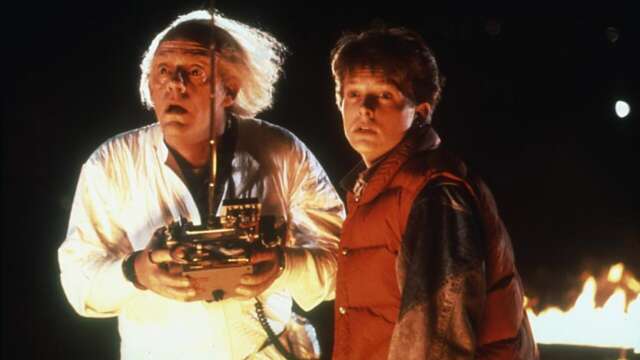
We almost didn’t get Back to the Future the way we know it. It was almost about a time fridge. It almost starred Eric Stoltz. The writer-producers Robert Zemeckis and Bob Gale were coming off of a string of flops. But thankfully, it did get made, and it’s one of the true gems of the 1980s, a time romp with the charismatic Michael J. Fox at the top of his game, powered by an iconic score by Alan Silvestri (and a Flux Capacitor). Of all the movies on this list, Back to the Future is one of the most endlessly re-watchable ones.
2. Ghostbusters (1984)
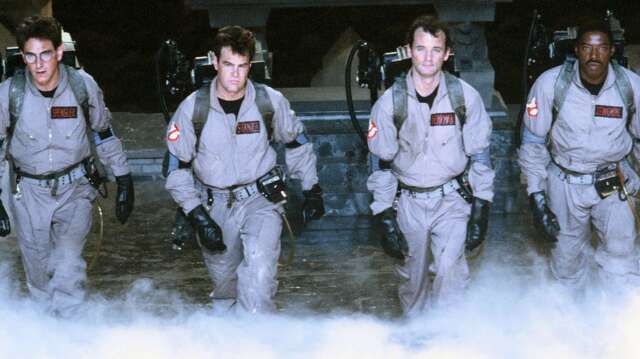
Much like another entry on this list, Back to the Future, Ghostbusters was almost a very different film with a very different cast. Luckily, though, the production ended up with the right team and script to truly capture a lightning ghost in a bottle. Ghostbusters tells the story of a trio of academics and inventors studying the paranormal, who go into the business of capturing and containing dangerous ghosts. It is, in essence, blue-collar sci-fi, with a heavy dose of comedy resulting from having three of the best comedy actors of the 1980s on the cast. Few movies are this rewatchable and this quotable.
1. Blade Runner (1982)
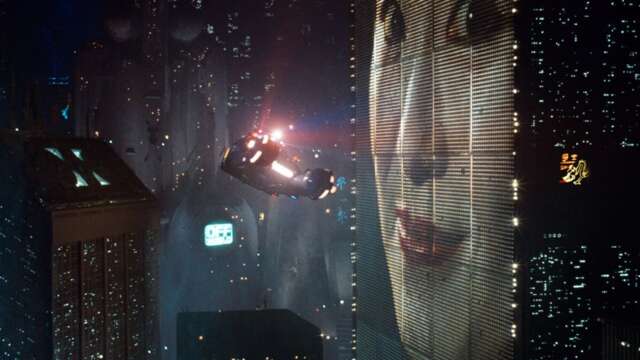
We can’t always tell what will be a classic when it first hits. When Ridley Scott’s Blade Runner hit in 1982, it was a commercial flop and received mixed reviews from critics. 40 years later, though, Blade Runner is a seminal sci-fi picture thanks to its incredible set design and atmosphere. This film is the very definition of science fiction, imagining a near-future time when all the good and bad stuff we’ve been warned about has come true, from extreme climate change to androids indistinguishable from humans. What does it mean to be human? To live? To know who and what you are? The questions are sticky and easy to get lost in, and Blade Runner does an incredible job of posing them without conclusively answering them, and it still looks great and feels relevant so many years later.
- "
- 1980s
- About
- Absolute
- acquainted
- across
- Action
- active
- Adventure
- aged
- Alan
- alex
- alien
- Alien life
- All
- ambitious
- American
- among
- animated
- Animation
- anime
- Another
- Anything
- Atmosphere
- audience
- AUGUST
- before
- BEST
- Biggest
- Bit
- Blade
- Blade Runner
- body
- Bonds
- Box
- box office
- bragging
- breathing
- Building
- Bunch
- business
- california
- call
- capitalism
- Career
- CGI
- change
- characters
- checking
- Circle
- City
- civilization
- Climate change
- Comedy
- coming
- commercial
- compelling
- considers
- contact
- Corporations
- could
- Couple
- create
- created
- Creators
- Credits
- cryogenic
- Culture
- Dark
- day
- decades
- deliver
- Design
- Detroit
- developed
- developing
- DID
- different
- Dimension
- Director
- Disney
- Distant
- down
- dozens
- Drama
- drifter
- Drop
- During
- e
- Earning
- earth
- electronic
- empire
- Endlessly
- ends
- energy
- essence
- experiment
- Face
- faces
- facing
- family
- fans
- FANTASY
- fascinating
- fault
- Feature
- featured
- Features
- Fiction
- Film
- films
- finds
- First
- Flash
- flight
- follow
- Football
- form
- format
- Fortnite
- Fortress
- Franchise
- Friendship
- full
- fun
- future
- Gadgets
- game
- Gamers
- Games
- Gaming
- Ghost
- good
- great
- Group
- Handy
- having
- head
- heading
- Helicopter
- help
- Highlight
- history
- Home
- Hospital
- How
- HTTPS
- Hulu
- human
- Humanity
- Humans
- Humor
- idea
- Identity
- illness
- imagination
- incredibly
- Indie
- influence
- interest
- IT
- Job
- join
- journey
- kids
- King
- laser
- latest
- Lavish
- Led
- Legendary
- light
- lightning
- List
- living
- Long
- love
- Mainstream
- MAKES
- Making
- Masks
- Media
- Men
- Military
- Misinformation
- mixed
- more
- movement
- movie
- Movies
- multiplayer
- multiplayer game
- Mythology
- Near
- neighbors
- NEO
- New York
- original
- Other
- outer space
- own
- pandemic
- parents
- perfect
- performance
- perspective
- picture
- planets
- play
- player
- Playing
- Point
- Police
- Positive
- potential
- power
- powerful
- Production
- Program
- proof
- protagonist
- Python
- Race
- raises
- real world
- recruiting
- reduce
- Relationships
- release
- released
- Reviews
- right
- ROBERT
- robot
- Roll
- running
- s
- Said
- satire
- Science
- science fiction
- SEA
- sense
- Series
- set
- Short
- Simple
- SIX
- skills
- Skin
- sleep
- small
- So
- son
- Space
- spacecraft
- Spin
- Stage
- standards
- Star
- Star Trek
- Star Wars
- stations
- stay
- Stephen
- Stories
- Storm
- Story
- Strikes
- success
- Supreme
- survive
- sweet
- taking
- Team
- Technology
- television
- tells
- tests
- The
- the world
- theme
- Through
- time
- Today
- together
- tokyo
- top
- Topics
- trailer
- trains
- Transformation
- transported
- Trust
- trusted
- ultimate
- us
- version
- Video
- viewers
- vision
- Voice
- war
- Watch
- What
- WHO
- Wisconsin
- woman
- Work
- workarounds
- working
- working out
- world
- Worlds
- worth
- years
- young
